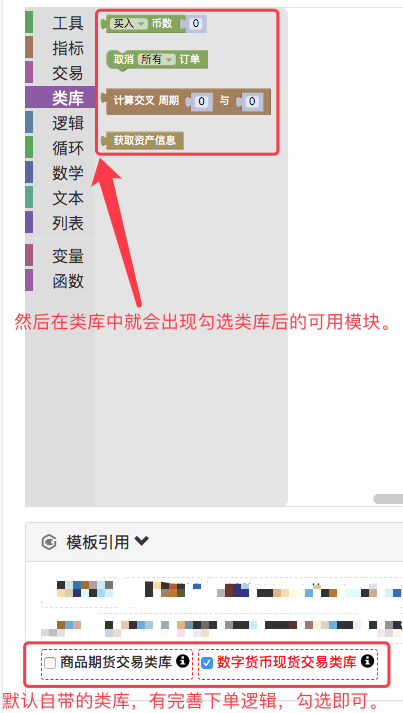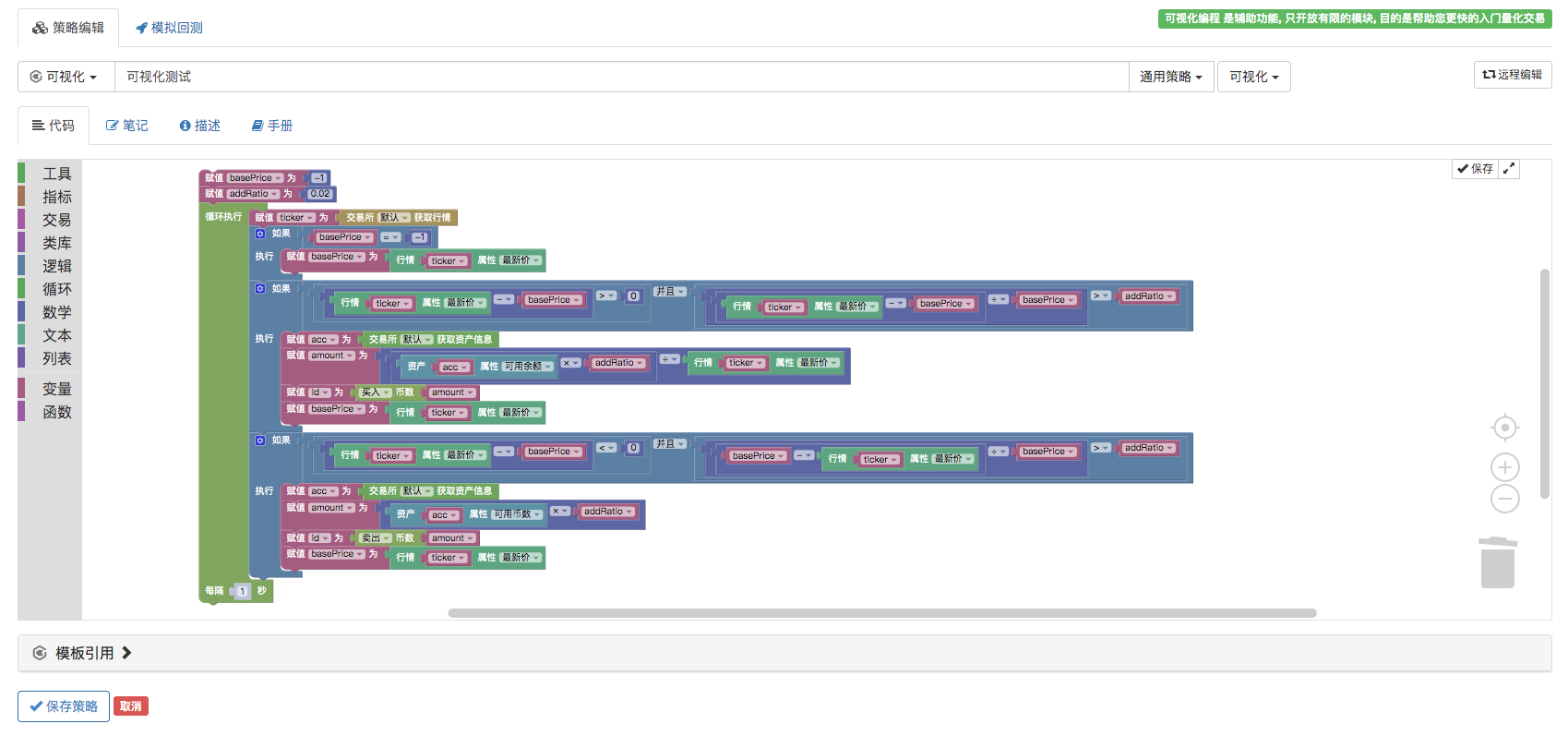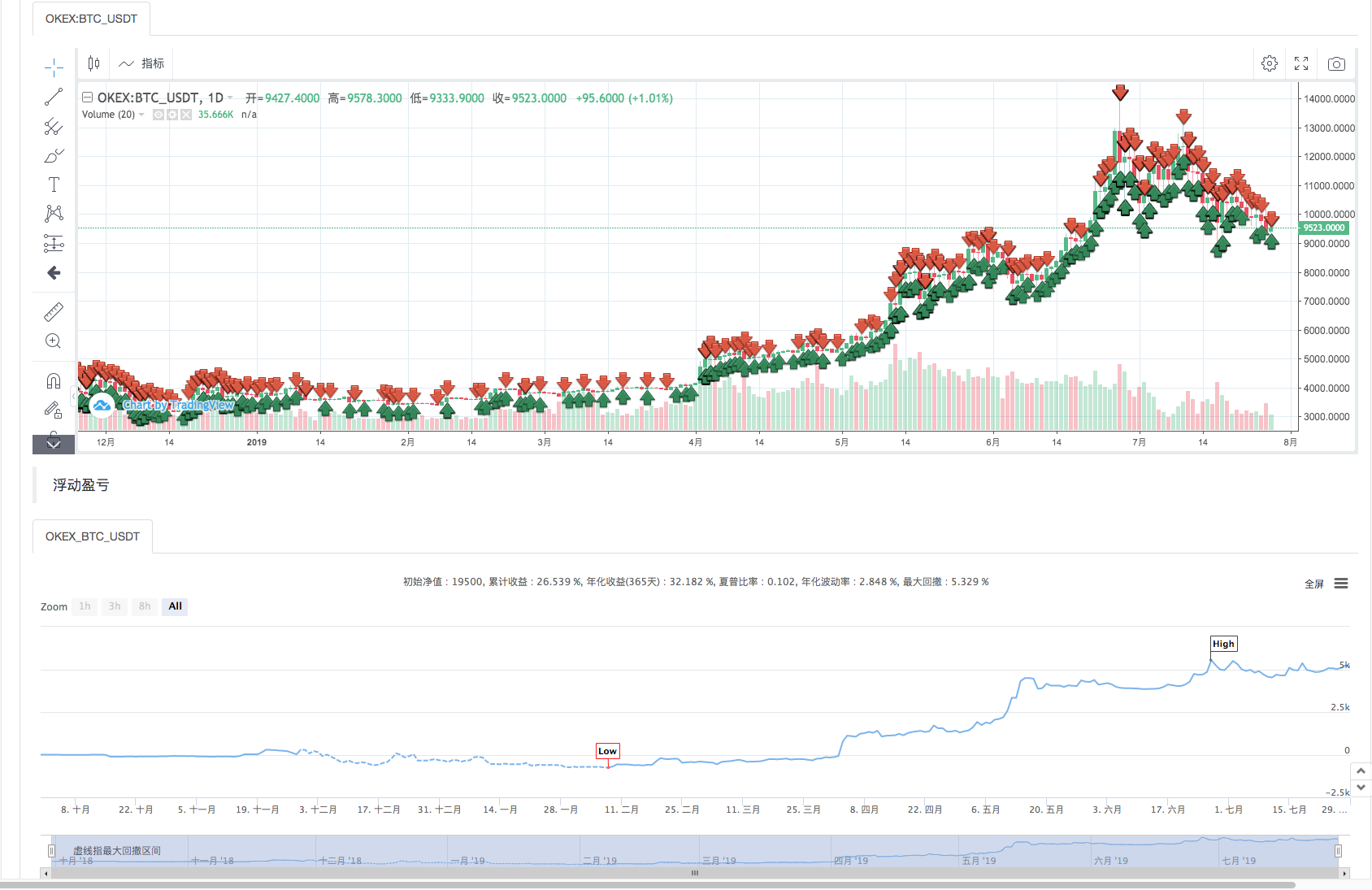Visualizing modules to build trading strategies - out
Author: The Little Dream, Created: 2019-07-29 09:04:35, Updated: 2023-10-20 20:09:03
Visualization modules to build trading strategies
By studying the content of the previous chapters of this series, you will have a basic understanding of the use of various types of visualization modules. In this chapter, we use a simple but interesting strategy to build a visualization module.
-
A simple, violent but fun chase-and-fall strategy
-
Strategic thought
The core of the strategy is to chase down, choose the market for the digital currency spot market, such as BTC_USDT, according to the price at the time of the strategy's operation, the price rises by a certain percentage, then buy a certain percentage of the current asset, and sell a certain percentage of the current asset.
-
Select Visualize class libraries and add multiple modules
Before we started building, we added some reusable modules.

As shown above:
The class libraries contain reusable packages that can be used after selection. The selected "digital currency spot market library" is a trading library for the digital currency spot market, which internally handles complex detection, retesting, etc. logics (e.g. how to handle transactions without a transaction after placing an order, etc.). This is a very convenient way to build strategies without a lot of complicated processing logic.
-
Spelling of policy modules

Since the strategic idea is simple, the strategic modules are put together, not very big. We are reassured that in less than a year from October 18th, there will be a large number of shocks and trends, which can be used as a preliminary testing strategy. The parameters of the retest:

Here's how this strategy performed in retesting:

An equivalent JavaScript language strategy, also released at the same time, can be studied by interested students. By learning how to build strategies through visualization modules, it is easy to get started with the conception of strategies, the use of various interfaces and programmatic transactions.
The strategy has no other interface parameters, and interested students can optimize the extension.
function main() { var basePrice = -1 var addRatio = 0.02 while (true) { var ticker = exchange.GetTicker() if (basePrice == -1) { basePrice = ticker.Last } if ((ticker.Last - basePrice) > 0 && ((ticker.Last - basePrice) / basePrice > addRatio)) { var acc = exchange.GetAccount() var amount = acc.Balance * addRatio / ticker.Last $.Buy(amount) basePrice = ticker.Last } if ((ticker.Last - basePrice) < 0 && ((basePrice - ticker.Last) / basePrice > addRatio)) { var acc = exchange.GetAccount() var amount = acc.Stocks * addRatio $.Sell(amount) basePrice = ticker.Last } } }A very interesting part of this strategy is that when the account asset is initially set to a coin and a cash value equivalent, for example, BTC_USDT trading pair, where the current price of BTC is 10,000, the account coin is divided into five, then the USDT is divided into 50,000.
The strategy is to take a neutral approach to market conditions, where prices are falling. I'm going to try to allocate a little bit less USDT, a little bit more currency. For example:

There is a marked change in the measurement.
You can also set up more USDT and less currency.

In the meantime, let's put together modules and try out our own programmatic trading ideas.
-
Visualizing the paradigm strategy:
- https://www.fmz.com/strategy/121404
- https://www.fmz.com/strategy/129895
- https://www.fmz.com/strategy/123904
- https://www.fmz.com/strategy/122318
More tips can be found at:https://www.fmz.com/square
Other articles in this series
- Visualizing modules to build trading strategies - progress
- Visualizing modules to build trading strategies - a basic understanding
- Visualizing modules to build trading strategies - in depth
It's boring programming, it's easy to do with blocks, try it out, it's fun!
- Quantifying Fundamental Analysis in the Cryptocurrency Market: Let Data Speak for Itself!
- Quantified research on the basics of coin circles - stop believing in all kinds of crazy professors, data is objective!
- The inventor of the Quantitative Data Exploration Module, an essential tool in the field of quantitative trading.
- Mastering Everything - Introduction to FMZ New Version of Trading Terminal (with TRB Arbitrage Source Code)
- Get all the details about the new FMZ trading terminal (with the TRB suite source code)
- FMZ Quant: An Analysis of Common Requirements Design Examples in the Cryptocurrency Market (II)
- How to Exploit Brainless Selling Bots with a High-Frequency Strategy in 80 Lines of Code
- FMZ quantification: common demands on the cryptocurrency market design example analysis (II)
- How to exploit brainless robots for sale with high-frequency strategies of 80 lines of code
- FMZ Quant: An Analysis of Common Requirements Design Examples in the Cryptocurrency Market (I)
- FMZ quantification: common demands of the cryptocurrency market design instance analysis (1)
- Neural network and digital currency quantitative trading series ((2)) Deep reinforcement learning training Bitcoin trading strategies
- Implementation and application of the inventor quantified platform in the fall line trading strategy
- KENTNA channel upgraded version of the KENTNA kingkeltner strategy